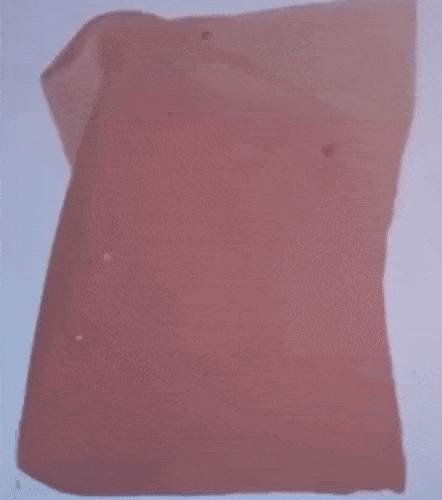'Mechanical breathing' in smart windows

Smart windows automatically change transparency when a voltage is applied. However, one reason they aren't more widespread is that the polymer inside dramatically expands and shrinks with every charge. Purdue University researchers have dubbed this effect "mechanical breathing."
"From our experiments, it can expand up to 30 percent in volume," said Xiaokang Wang, a Ph.D. student under Kejie Zhao, an assistant professor of mechanical engineering. "That's a huge amount. These expansion-shrinkage cycles put a huge stress and strain on the materials of the windows. It causes layers of the window to delaminate, and then the smart window doesn't work."
Wang's paper on "mechanical breathing" has been published in the journal Nature Communications.
Smart windows come in many different configurations, but the most popular are called electrochromic devices because they change color when a voltage is applied. On the Boeing 787 Dreamliner aircraft, for example, passengers can gradually adjust the transparency of their windows using electrochromics. Similar windows are now available for large-scale installation in buildings, programmed to gradually darken on sunny days to reduce energy costs.
A typical electrochromic smart window has five layers, with two electrodes on either side, an ion storage layer, an electrochromic layer, and an electrolyte in the middle. Jianguo Mei, assistant professor of organic chemistry at Purdue, had been experimenting with different chemical recipes for the thin-film electrochromic material in order to enhance the reliability of the window. But the laminated structure of a smart window makes it difficult to study individual components during operation; the entire five-layer substrate is just 500 nanometers thick, less than 1% the thickness of a human hair.
Mei enlisted the help of Zhao to assess the mechanical properties of the film at nanoscale. Zhao and Wang were shocked by the initial tests.
"The material expanded up to 30 percent in volume, but also became half as elastic and half as hard," Wang said.
This "mechanical breathing" caused the material to wrinkle and push up against the other layers of the substrate. The outer layers delaminated, preventing electrons from flowing and causing the electrochromic device to stop functioning.
"In our experiments with untreated samples, we saw failure after just 100 cycles," Wang said.
They began to tweak and strengthen the substrate material of the electrode, roughening the surface with silica nanoparticles. This increased mechanical reliability, surviving up to 8,000 cycles. But it's not nearly enough.
"These devices need to be able to withstand more than 200,000 cycles," Wang said. "That's a huge gap!"
Wang and Zhao, along with Mei's group in the Department of Chemistry, are continuing their studies in hopes that these electrochromic devices can be made more reliable.
"From our experiments, we are building new theoretical models," Wang said. "Together with material scientists and chemists, we want to find new materials, new material processing methods, and new mechanical designs to achieve much higher lifetimes of these devices."
Smart windows have the potential to save huge amounts of energy, becoming a normal and reliable part of homes, offices and vehicles. But until reliability is improved, Purdue researchers will continue their work.
"I can see a future where entire walls will be electrochromic smart windows," Wang said. "People can enjoy the beautiful outdoors while decreasing energy consumption at the same time. It's a win-win!"
More information: Xiaokang Wang et al. Mechanical breathing in organic electrochromics, Nature Communications (2020). DOI: 10.1038/s41467-019-14047-8
Journal information: Nature Communications
Provided by Purdue University




















